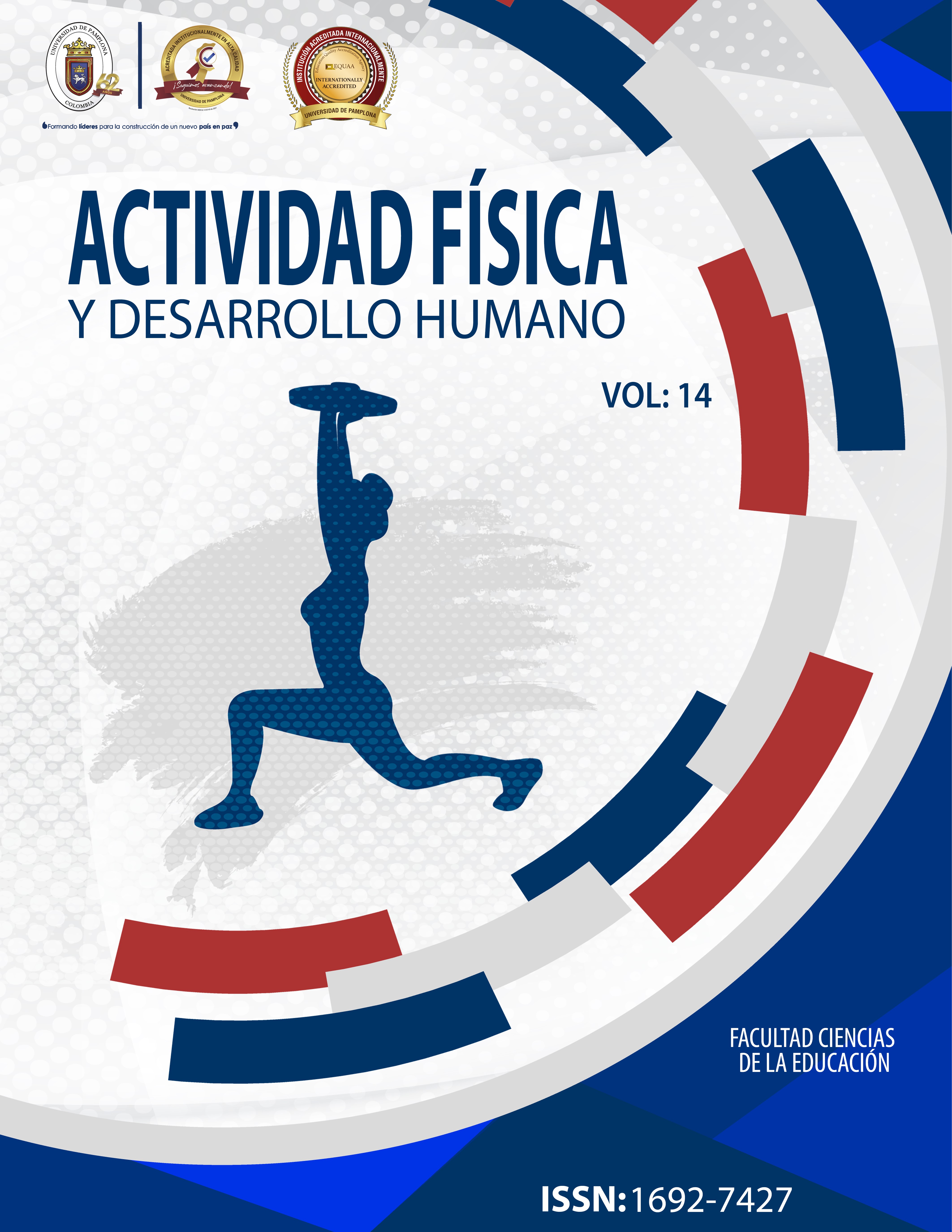SURVEY ON PHYSICAL EXERCISE HABITS IN THE CITY OF BUCARAMANGA
DOI:
https://doi.org/10.24054/afdh.v14i1.2509Keywords:
Physical exercise characterization instrument ICEF, Adherence, Sedentary tendencies, Dosage of physical exerciseAbstract
There are many validated questionnaires in the world to measure the physical fitness of people such as the IPAQ, GPAQ, FITNESSGRAM, PACE or the YPAS. However, it is necessary to construct questionnaires that, in addition to characterizing the physical activity of populations in terms of exercise dosage, also inquire about the physical capacities worked, the place of exercise, and the appearance of injuries, the direction and progression of exercise and its prevalence over time. In this study, the physical exercise characterization instrument (ICEF) is applied to the population of Bucaramanga. In 1923 persons of all ages, sexes, housing strata, levels of education, occupations and marital status, the results of the ICEF show the following trends in the city of Bucaramanga: The population that does not exercise affirms in 41% that it is for work reasons, in 27% for demotivation and in 20% for household occupations. Although 73% of the population does physical exercise, about half of these people do it less often than three days a week. 65% of the population has no knowledge of the volume, intensity, rest and adequate frequency of weekly physical exercise, because they report exercising with outdated physical loads. Only 30% of people who exercise are directed by a reliable source of knowledge. The population has no prevalence of physical exercise over time; because half of the people claim to have exercised all their lives, however, 60% drop out continuously, this being a contradiction.
Downloads
References
Díaz J. Formación de un ser humano con la capacidad de adherencia al ejercicio físico en pro de la calidad de vida. Tesis de grado. Universidad pedagógica. Bogotá. 2020. http://repositorio.pedagogica.edu.co/bitstream/handle/20.500.12209/12797/formacion_de_un_ser_humano_con_la_capacidad_de_adherencia_al_ejercicio_fisico_en_pro_de_la_calidad_de_vida.pdf
ENSIN. (21 de noviembre de 2017). Gobierno presenta Encuesta Nacional de Situación Nutricional de Colombia (ENSIN) 2015. Boletín de Prensa No 169 de 2017. Ministerio de salud y protección social. https://www.minsalud.gov.co/Paginas/Gobierno-presenta-Encuesta-Nacional-de-Situaci%C3%B3n-Nutricional-de-Colombia-ENSIN-2015.aspx
Freire, GLM, Fortes, LS, Moreira, JAGLF, Alves, JFN, Souza, MF d, & Nacimiento Junior, JRA. (2021). Frecuencia semanal de entrenamiento como un factor asociado a dependencia al ejercicio en atletas recreativos. Cuadernos de Psicología del Deporte, 21(2), 1-12. E pub 16 de mayo de 2022. http://scielo.isciii.es/scielo.php?script=sci_arttext&pid=S1578-84232021000200002&lng=es&tlng=pt
Galeano N. Cortés S. La sobrecarga laboral y sus consecuencias en la salud de los trabajadores. Revisión sistemática. Universidad cooperativa de Colombia, Cali, Colombia. content (ucc.edu.co)https://www.minsalud.gov.co/Paginas/Gobierno-presenta-Encuesta-Nacional-de-Situaci%C3%B3n-Nutricional-de-Colombia-ENSIN-2015.aspx
Martínez, L. (22 de junio de 2022). “Fitness Gram”: Una herramienta para evaluar y promoverla aptitud física. Programa de Maestría en Ciencias del Ejercicio con especialidad en Fisiología del Ejercicio. Universidad de Puerto Rico. https://1library.co/document/z3dvnw7d-fitnessgram-herramienta-evaluar-promover-aptitud-f%C3%ADsica.html
OMS. (12 de septiembre de 2022). Cuestionario Mundial sobre Actividad Física (GPAQ). Departamento de Enfermedades crónicas y Promoción de la Salud. Organización mundial de la salud. https://studylib.es/doc/5157385/cuestionario-mundial-sobre-actividad-f%C3%ADsica--gpaq-#:~:text=Cuestionario%20Mundial%20sobre%20Actividad%20F%C3%ADsica%20%28GPAQ%29%20Departamento%20de,vigilancia%20de%20la%20actividad%20f%C3%ADsica%20en%20los%20pa%C3%ADses
OMS. (9 de junio de 2021). Obesidad y sobrepeso. Datos y cifras. Organización mundial de la salud. https://www.who.int/es/news-room/fact-sheets/detail/obesity-and-overweight
Ortiz R. Gómez J. La actividad física, el entrenamiento continuo e intervalo: una solución para la salud. Artículo de reflexión. Revista Salud Uninorte. Barranquilla. Colombia. Vol. 33, N° 2, 2017 ISSN 0120-5552 e ISSN 2011-7531. http://www.scielo.org.co/pdf/sun/v33n2/2011-7531-sun-33-02-00252.pdf
Soriano J. Una revisión sistemática de la importancia del ejercicio físico sobre la autoeficacia y aprendizaje del estudiante. Revista Retos. La Rioja. España. 2023. Retos. 48. 911-918. 10.47197/retos. v48.97581. https://www.researchgate.net/publication/369527735_Una_revision_sistematica_de_la_importancia_del_ejercicio_fisico_sobre_la_autoeficacia_y_aprendizaje_del_estudiante_A_systematic_review_of_the_importance_of_physical_exercise_on_student_self-efficacy_a
Valcarce T. Veiga O. Arroyo A. Encuesta Nacional de Tendencias de Fitness en Colombia para el Año 2021. Revista Retos. 43. 107-116. 10.47197/retos. v43i0.88528. (PDF) Encuesta Nacional de Tendencias de Fitness en Colombia para el Año 2021 (National Survey of Fitness Trends in Colombia for 2021) (researchgate.net)
Downloads
Published
Versions
- 2024-07-31 (3)
- 2023-08-30 (2)
- 2023-08-30 (1)










